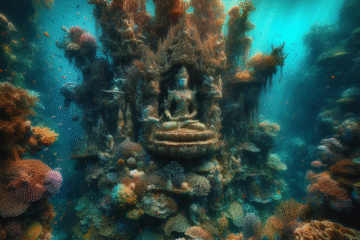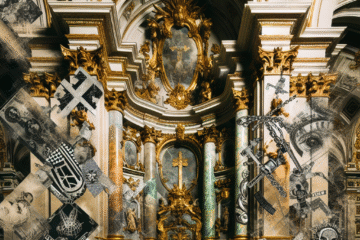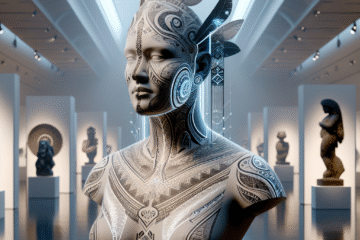I. Introduction
The rise of social media has had a profound impact on many aspects of our lives, including the way we consume and engage with art. The ability to share and discover art online has changed the way artists create and share their work, as well as how art is bought and sold. This article aims to explore the impact of social media on contemporary painting, answering questions such as: How has social media changed the way artists create and share their work? How has it affected the art market? And what are the potential implications of these changes for the future of painting?
It is important to explore this topic because the art world is in a state of flux. Social media has disrupted traditional art market structures and gatekeepers, and has opened up new opportunities for artists to connect with audiences and sell their work. However, the rise of digital art and the democratization of the art market also raises questions about the quality and originality of art. Understanding the impact of social media on contemporary painting is crucial for artists, galleries, collectors, and art lovers alike to navigate this ever-changing landscape.
The advent of social media has drastically changed the way art is discovered, shared, and sold. Platforms like Instagram, Facebook, and Twitter have given artists direct access to audiences, bypassing traditional gatekeepers like galleries and curators. This has led to the rise of the “digital artist,” who uses social media to build a following, share their process, and sell their work online. Social media has also made it easier for art buyers to discover new artists and purchase art directly from the artist, cutting out the middleman.
However, the rise of social media has not only brought benefits but also has some drawbacks. On one hand, social media can be a powerful tool for artists to promote their work and connect with audiences. On the other hand, social media can also lead to oversaturation, making it harder for artists to stand out and for audiences to distinguish between high-quality and low-quality art. Additionally, the rise of digital art raises questions about the authenticity and originality of the work. How can we ensure that digital art is not easily replicated or stolen?
In conclusion, the impact of social media on contemporary painting is a complex and multifaceted topic. While social media has opened up new opportunities for artists to connect with audiences and sell their work, it also brings new challenges and raises questions about the authenticity and originality of digital art. Understanding the implications of these changes is crucial for navigating the ever-changing art world. This article aims to provide insight into the impact of social media on contemporary painting and encourage further exploration of this important topic.
II. The Rise of Social Media and Its Impact on the Art World
Social media has dramatically changed the way we discover, share, and consume art. A brief history of social media shows that platforms like Facebook and Twitter were launched in the mid-2000s, while Instagram, now one of the most popular social media platforms, was launched in 2010. Since then, social media has grown in popularity and has become an integral part of our daily lives. This has also had a significant impact on the art world.
One of the biggest ways social media has changed the art world is by making it easier for art to be discovered and shared. Artists can now bypass traditional gatekeepers like galleries and curators by sharing their work on social media platforms. They can connect with audiences directly and build a following online. This has led to the rise of the “digital artist,” who uses social media to promote their work and sell it online. Social media has also made it easier for art buyers to discover new artists and purchase art directly from the artist, cutting out the middleman.
However, the rise of social media also brings challenges for artists, galleries, and collectors. On one hand, social media can be a powerful tool for artists to promote their work and connect with audiences. On the other hand, social media can also lead to oversaturation, making it harder for artists to stand out and for audiences to distinguish between high-quality and low-quality art. Additionally, the rise of digital art raises questions about the authenticity and originality of the work. How can we ensure that digital art is not easily replicated or stolen?
Social media also has a mixed impact on galleries and collectors. On one hand, it makes it easier for galleries to promote their shows and reach new audiences. On the other hand, it also puts pressure on galleries to have a strong online presence and can make it harder for them to compete with the direct-to-consumer model. Collectors also have to navigate a more crowded and diverse market, with more options available to them than ever before.
In conclusion, the rise of social media has had a significant impact on the art world. It has made it easier for art to be discovered and shared, and has given artists new opportunities to connect with audiences and sell their work. However, it has also brought new challenges, such as oversaturation and questions about the authenticity and originality of digital art. The impact on galleries and collectors is also mixed, as they have to navigate a more crowded and diverse market. Overall, social media has changed the way art is discovered, shared, and sold, and its impact on the art world will continue to evolve in the future.
III. How Social Media Has Changed the Way Artists Create and Share Their Work
Social media has changed the way artists create and share their work in significant ways. One of the biggest ways it has changed the art world is by making it easier for artists to connect with their audiences and share their creative process. Artists can now use social media platforms like Instagram, TikTok, and YouTube to share behind-the-scenes footage of their work and give their audiences a glimpse into their creative process.
For example, many artists now use Instagram to document their process through videos, images, and stories. They can share progress shots of their work, post videos of themselves working in their studios, and even live-stream themselves painting or drawing. This gives audiences an intimate look at the artist’s process, which can be incredibly engaging and allows audiences to connect with the artist on a deeper level.
Another way artists are using social media is by using it as a platform for collaboration. Artists can use social media to connect with other artists, curators, and gallerists, which can lead to new opportunities and collaborations. This can also help artists to expand their reach and connect with new audiences.
However, the increased use of social media in the art world also raises questions about the potential impact on the quality and originality of art. One concern is that the pressure to constantly produce and share content could lead to a decrease in the quality and originality of the art. Additionally, social media can also make it easier for art to be replicated or stolen, which can lead to a decrease in the value of the art.
In conclusion, social media has changed the way artists create and share their work in significant ways. Artists can now use social media platforms to connect with their audiences and share their creative process, which can be incredibly engaging and allow audiences to connect with the artist on a deeper level. However, the increased use of social media in the art world also raises questions about the potential impact on the quality and originality of art. It’s important to consider the pros and cons of social media in the art world, and to be mindful of the potential negative impact on the quality and originality of art.
IV. The Impact of Social Media on the Art Market
Social media has had a significant impact on the art market, with the rise of digital art and the potential for social media to democratize the art market. One of the biggest ways that social media has changed the art market is by making it easier for artists to sell their work directly to audiences. Artists can now use social media platforms like Instagram, TikTok, and YouTube to promote and sell their work, which allows them to bypass traditional art market gatekeepers like galleries and curators. This can be especially beneficial for emerging artists who may not have the same opportunities to show their work in traditional brick and mortar galleries.
Additionally, social media has also made it easier for artists to create and sell digital art. Digital art, which includes art created using digital tools such as software and apps, has become increasingly popular in recent years. Artists can now create digital art and share it with their audiences on social media platforms, which can lead to increased exposure and sales.
However, the rise of digital art and the use of social media to sell art has also presented some challenges for traditional art market structures and gatekeepers. For example, many galleries and curators have had to adapt to the new digital landscape, and some have struggled to stay competitive. Additionally, the democratization of the art market through social media can lead to a decrease in the value of art, as the supply of art available to audiences increases.
In conclusion, social media has had a significant impact on the art market, with the rise of digital art and the potential for social media to democratize the art market. This can be beneficial for emerging artists who may not have the same opportunities to show their work in traditional brick and mortar galleries. However, the rise of digital art and the use of social media to sell art has also presented some challenges for traditional art market structures and gatekeepers, and the democratization of the art market through social media can lead to a decrease in the value of art. It’s important for artists, galleries, and curators to be aware of these challenges and opportunities, and to adapt to the new digital landscape in order to stay competitive.
V. Conclusion
In this article, we have discussed the impact of social media on contemporary painting. We looked at how social media has changed the way art is discovered, shared, and sold, and the pros and cons of social media for artists, galleries, and collectors. We also examined how social media has changed the way artists create and share their work, and the potential impact of social media on the quality and originality of art. Lastly, we explored the impact of social media on the art market, including the rise of digital art and the potential for social media to democratize the art market, as well as the challenges and opportunities for artists and galleries in the digital age.
In summary, social media has had a significant impact on the art world, and it continues to shape the way we experience and engage with art. The ease of access to art and the increased visibility of artists through social media has the potential to democratize the art market and provide new opportunities for emerging artists. However, social media also presents challenges for traditional art market structures and gatekeepers, and the democratization of the art market can lead to a decrease in the value of art.
As we look to the future, it’s clear that social media will continue to play a significant role in the art world. Artists, galleries, and curators will need to adapt to the new digital landscape in order to stay competitive and make the most of the opportunities presented by social media. Additionally, it’s important for audiences to be aware of the impact of social media on the art world and to engage with art in a critical and thoughtful way.
In conclusion, the impact of social media on painting in the 21st century has been immense and ongoing. It has changed the way we discover, share, and experience art, and it has democratized the art market, giving more opportunities to emerging artists. But, it also presents challenges for the traditional art market gatekeepers and institutions, and the democratization can decrease the value of art. As we move forward, it’s important for all stakeholders in the art world to be aware of and adapt to these changes and opportunities, in order to make the most of the digital age.


